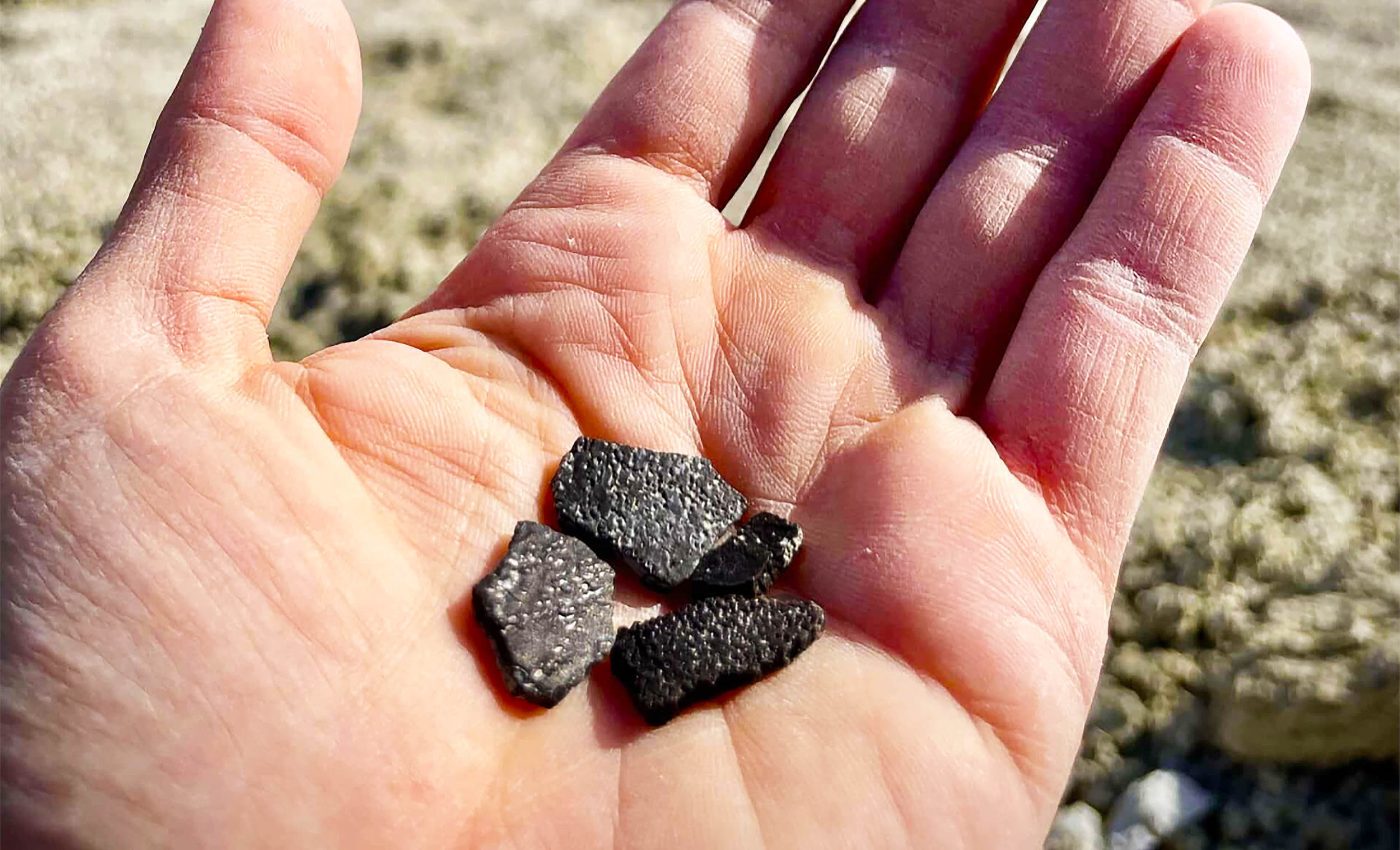
Discovery of 100-million-year-old dinosaur eggs reveals life in Jurassic America
Life along the edge of the Western Interior Seaway was anything but quiet 100 million years ago. Seasonal floods crisscrossed low-lying plains, and tangled forests pressed against muddy channels that wound through what is now central Utah.
In this landscape, dinosaurs and early mammals shared watering holes while ancient crocodile relatives stalked the shallows.
Fossils from the Mussentuchit Member of the Cedar Mountain Formation have already painted a bustling scene, yet broken eggshells scattered through the layers add an intimate chapter: they reveal who was actually nesting in the neighborhood.
Dinosaur eggs hidden in rocks
For decades, paleontologists assumed just one dinosaur egg type lay buried in these sediments. That idea collapsed after researchers collected more than 4,000 eggshell fragments from 20 sites and examined them under light microscopes and scanning electron microscopes.
The shells split into at least six distinct ootaxa – scientific shorthand for fossil egg species – showing that several very different animals shared the same hatchery grounds.
“The most interesting thing about this for me is the multiple types of elongatoolithid eggshells, which correspond to multiple types of oviraptorosaur dinosaurs,” explained Dr. Josh Hedge, a visiting assistant professor of biology at Lake Forest College.
“I think historically we have been guilty of thinking there is one kind of each dinosaur in a given ecosystem, but we are finding more and more that multiple species of each group are likely coexisting.”
Their analysis suggests there were at least two or three oviraptorosaurs of different sizes laying eggs in that Utah ecosystem at around the same time.
Shell shard dinosaur egg diversity
Elongatoolithid shells, linked to feathered oviraptorosaurs, made up a hefty share of the cache. Their stiff, elongated grains resemble modern bird eggs, hinting at sophisticated gas exchange that may have allowed parents to bury clutches in warm sand.
Ornithopod eggs surfaced too, assigned to Spheroolithus – the same ootaxon tied elsewhere to plant-eaters that toddled on two legs.
The most surprising shard bore the microscopic texture of Mycomorphoolithus kohringi. Until now that ootaxon was known only from Europe and belonged to a crocodylomorph, an extinct cousin of today’s alligators.
Its presence in Utah broadens the map for ancient reptiles that likely cruised coastal wetlands while dinosaurs roamed the drier ground nearby.
Meet the egg layers
Oviraptorosaurs were not the hulking predators their name might suggest. Most were mid-sized, feather-clad omnivores with strong beaks and stubby tails.
Recent skeletal finds elsewhere in the formation – among them Moros, a horse-sized early tyrannosaur, and Iani, a beaked plant-eater – already hint at unexpected variety.
The eggs extend that list to cover animals whose bones have yet to surface, highlighting how fragmentary fossils still redraw the dinosaur family tree.
Ornithopods, meanwhile, were the workhorses of the Cretaceous West. Whether dry-season grazers or wet-season browsers, they left abundant tracks but rarely complete skeletons.
Their thick-walled eggs support the idea that they buried clutches in vegetation, much like today’s megapode birds.
Clues to ancient highways
The Cedar Mountain eggs also bolster evidence for a long, slow traffic flow between Asia and North America across the Beringia land bridge.

Similar oviraptorosaur and crocodylomorph eggs appear in both regions, suggesting that migrants arrived in Utah generations before the famous “dinosaur explosion” later in the Cretaceous.
Their overlap with older, home-grown species shows that newcomers and natives nested side by side rather than replacing each other overnight.
What eggs say about ecosystems
Nesting sites freeze a moment in time more precisely than scattered bones. Clutch spacing, shell thickness, and pore patterns hint at soil moisture, vegetation cover, and even parental care.
The six ootaxa imply a patchwork of strategies: shallow-buried mounds for crocodile cousins, sand-plastered rings for oviraptorosaurs, and perhaps leaf-blanketed pits for ornithopods.
Such variety points to a landscape rich in microhabitats, where animals could partition resources instead of competing head-to-head.
Microscopic and scanning electron analyses revealed crystallite patterns thinner than a human hair, allowing scientists to match tiny fragments to broader evolutionary groups.
They also detect mineral coatings that record burial temperature and groundwater chemistry, adding climate data to the biological story.
Why fragments still matter
The study shows how a handful of shell slivers can upend textbook diagrams of ancient food webs. Tiny as they are, the shards confirm that early Late Cretaceous ecosystems were already layered with complexity – long before Triceratops and Tyrannosaurus reigned farther north.
Each eggshell is a postcard from deep time, stamped with the texture of parents that guarded nests, fought floods, and raised hatchlings on floodplain islands that no longer exist.
Eight inches of rock might hold one summer’s worth of nesting. Multiply that by the miles of Cedar Mountain exposures, and Utah’s badlands still have volumes to teach about the rhythms of ancient life.
Paleontologists will keep combing the gullies, because every broken eggshell offers another clue – and another chance to see the past more clearly.
The full study was published in the journal PLOS ONE.
—–
Like what you read? Subscribe to our newsletter for engaging articles, exclusive content, and the latest updates.
Check us out on EarthSnap, a free app brought to you by Eric Ralls and Earth.com.
—–














